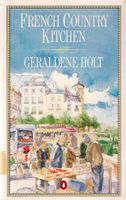Advertisement
Herbs and Spices
Published 1987

It is the feast of St Jean, the height of summer. As you approach Uzès across the garrigue you meet a few early risers already hurrying away from the centre of town, carrying bulging bags, a bundle or so, even a lacy sack of what is known as ‘the stinking rose’, Allium sativum or garlic. Today is the annual garlic fair. Growers from further south have brought some of their choicest produce to sell in the elegant streets and the arcaded Place aux Herbes of this charming town.
Huge pyramids of the papery bulbs – some white, some rosy pink – have been built on the pavements, in the streets, at the back of lorries and around the fountain. Bundles of garlic spill over tables, long garlands hang from the awnings of market stalls, others are worn round the necks of the sellers. Even the shops are selling garlic – but far dearer. Over everything hangs a perfumed cloud, not so much of garlic – more like a gentle aroma of leeks, closer to chives or young onions. This is freshly harvested garlic and the flavour, when eaten, has a creamy richness which gains its familiar pungency only as it dries during the summer. M. Charnas has arrived with his son and daughter, and they sit on sacks of garlic plaiting the stems to make long chains. He tells me that he grows his garlic in the sandy soil around Cavaillon in strips set between the melons for which the area is well-known. Each clove or gousse is planted in late September or October. Three hundred years earlier

